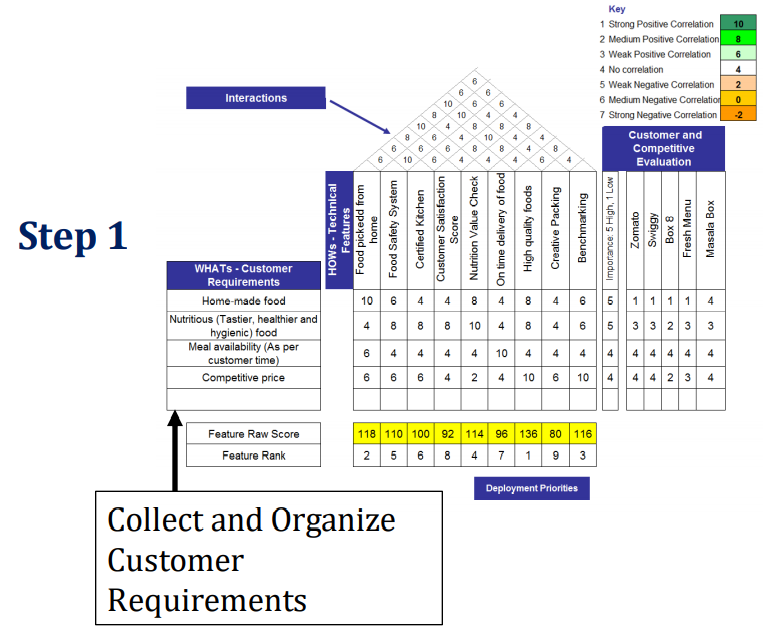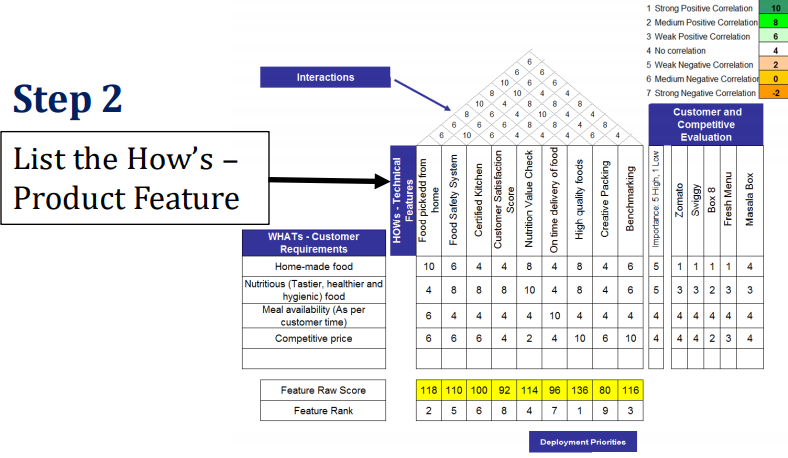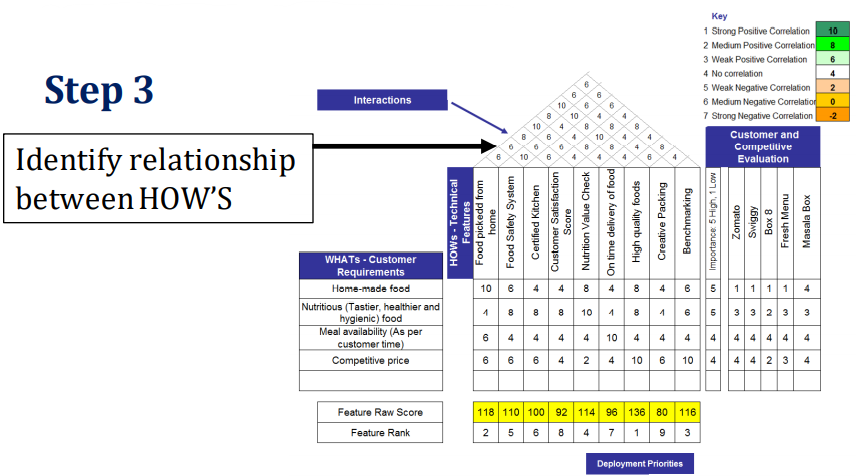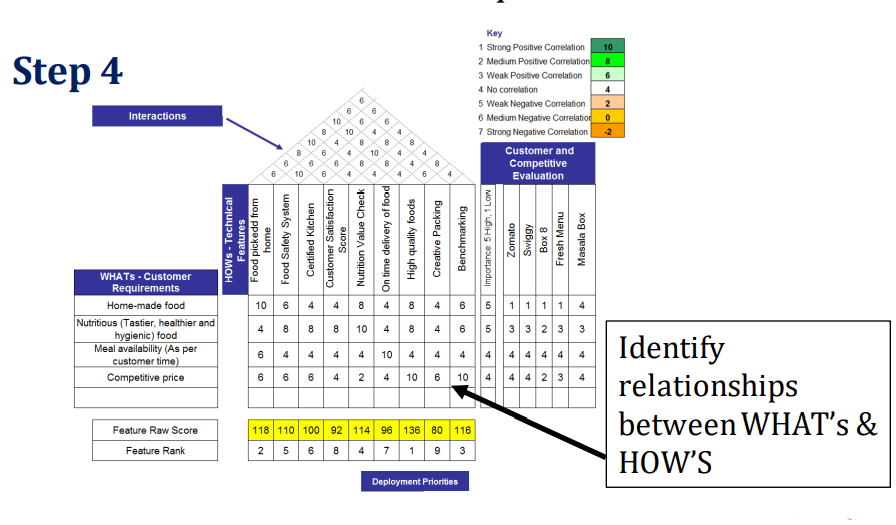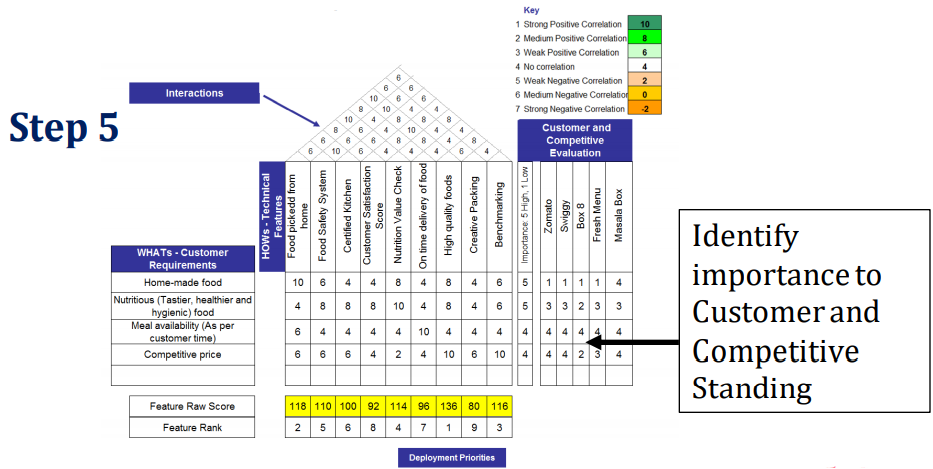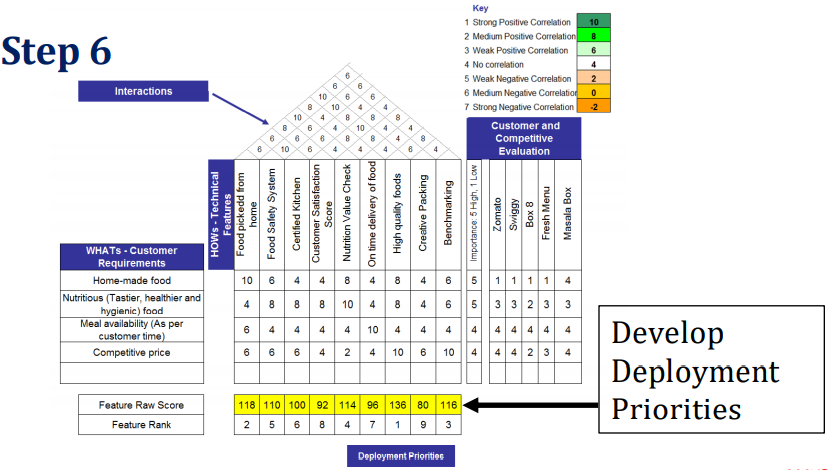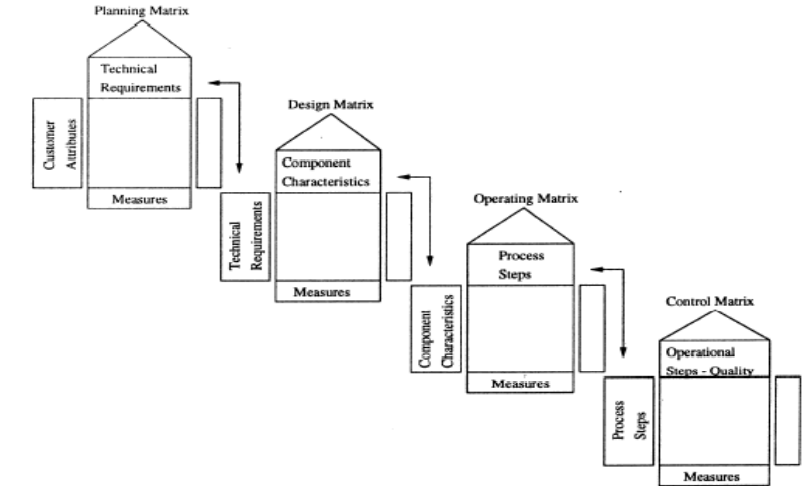
- Quality Function Deployment (QFD) is a structured approach to defining customer needs or requirements and translating them into specific plans to produce products to meet those needs.
- The Quality Functional Deployment is built on the fundamentals of Matrix Diagram to identify the strengths of What’s & How’s
- The “voice of the customer” is the term to describe these stated and unstated customer needs or requirements.
- This understanding of the customer needs is then summarized in a product planning matrix or “house of quality”

